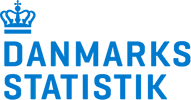BULGARIA – Migration and demographic patterns in Central-Eastern Europe
This report is a part of deliverable “D.6.2. Report on migration and demographic patterns in the EU CEE countries and potential source countries” from the project FUME – Future Migration Scenarios for Europe (870649), financed with the Horizon 2020 programme. In particular, this country report focuses on critical analysis of migration data in Bulgaria. The analysis consists of an overview of stock and flow data on migrants, including such dimensions as age groups, gender, country of origin, education levels and length of residence. This report is a first step in analytical exercise of this deliverable which aims to determine migration potential from and to Bulgaria and furthermore, to provide necessary data input for fine-tuning of FUME migration projection model.
The Republic of Bulgaria is a country in Southeast Europe, which joined the European Union in 2007, but so far is outside of the Schengen zone. It has traditionally been a country of emigration, i.e., more Bulgarians used to leave the country than foreign-born persons arrived. In the last decade, immigration has been increasing but, nevertheless, it still remains at a relatively low level in comparison to other EU countries. The report presents a historical overview of migration processes in Bulgaria, underlying mainly recent emigration tendencies. Then, migration stocks and
flows are analyzed using mainly national data complemented by research reports. Moreover, the report presents migration data estimations provided by Abel and Cohen (2019).









